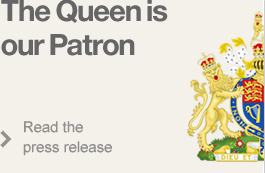The committee of Twenty Five were a group of barons in the forefront of the opposition to King John who were entrusted by the terms of clause 61 of Magna Carta to ensure the king’s compliance with its terms.
The Barons
- Eustace de Vesci
- Robert de Ros
- Richard de Percy
- William de Mowbray
- Roger de Montbegon
- John FitzRobert
- William de Forz
- John de Lacy
- Saer de Quincy, Earl of Winchester
- Richard de Montfichet
- William de Huntingfield
- Roger Bigod and Hugh Bigod
- Robert de Vere
- Geoffrey de Mandeville
- Henry de Bohun
- Richard de Clare and Gilbert de Clare
- William D'Albini
- Robert Fitzwalter
- William Hardel
- William de Lanvallei
- William Malet
- William Marshall II
- Geoffrey de Say
From the outset, the opposition barons had been aware of the danger that, once King John had left Runnymede, he would renege on the Charter on the grounds that it constituted an illegitimate infringement of his authority. The barons came up with a novel solution to the problem in the famous clause 61, the security clause. In this, King John conceded that ‘the barons shall choose any twenty-five barons of the realm as they wish, who with all their might are to observe, maintain and cause to be observed the peace and liberties which we have granted’. Any infringement of the charter’s terms by the king or his officials was to be notified to any four of the committee; and, if within forty days no remedy or redress had been offered, then the king was to empower the full committee to ‘distrain and distress us in every way they can, namely by seizing castles, lands and possessions’ until he made amends. In this remarkable clause, then, the charter introduced the novelty of obliging the king to sanction and institute armed action against none other than himself. The means by which they sought to achieve this was use of the common law doctrine of distraint, the means by which debts were collected from debtors and malefactors obliged to answer for their actions in court.
Since the clause anticipated the election of the twenty-five at some time in the future, their names are not actually listed in the charter. Consequently, the committee’s composition is known principally from the list given later in his chronicle by Matthew Paris, the celebrated chronicler of St Albans Abbey (Herts.). The twenty five were: Richard, earl of Clare; William de Fors, count of Aumale; Geoffrey de Mandeville, earl of Gloucester; Saer de Quincy, earl of Winchester; Henry de Bohun, earl of Hereford; Roger Bigod, earl of Norfolk; Robert de Vere, earl of Oxford; William Marshal junior; Robert FitzWalter; Gilbert de Clare; Eustace de Vesci; Hugh Bigod; William de Mowbray; the Mayor of London; William de Lanvallei; Robert de Ros; John de Lacy, constable of Chester; Richard de Percy; John FitzRobert; William Malet; Geoffrey de Say; Roger de Montbegon; William de Huntingfield; Richard de Munfichet; and William d’Aubigny.
It is noteworthy that these men were all layfolk, and for the most part members of the hard-line baronial opposition to the king. No bishop or other Churchman appears, not even, for example, Giles de Braose, bishop of Hereford, who had long been hostile to John. The committee was seen in clear terms as a committee of enforcers, a group whose main responsibilities were to be of a military nature.
Why did the barons alight on the number twenty-five in particular? One very obvious reason, it being an odd number, was to avoid split voting. More mystically, however, the number twenty-five was highly significant in the Bible. It was, for example, the age from which God instructed Moses to permit the Levites to be consecrated to God’s service and the age from which many of the kings of Judea had come to the throne; while it also represented ‘the law squared’ in the sense that there are five books to the Pentateuch and, in the New Testament, five loaves for feeding the five thousand. These legitimising links from the Bible were of great importance in the Middle Ages.
At a more prosaic level, it is worth remembering that the court of aldermen of the city of London, which is known to have been in existence by 1200, was made up of twenty-five members. It may have been from the number of this body that the barons drew their most immediate inspiration.
Over the next two years, on a monthly basis, we will be publishing a short biography of each of the members of this famous group. They were a body linked together by ties of blood, kinship, association and, in many cases, neighbourhood. Most of all, however, they were brought together by their opposition to what they considered the unjust rule of King John.
The first Baron we have details on is Eustace de Vesci: click on the link on the left to find out more.
(This page and the details of each of the Barons are written by and copyright held by Professor Nigel Saul of Royal Holloway, University of London)
Featured Article
790 years ago, John,the King of England was having a little local difficulty with his barons. His attempts to defend his extensive dominions across the Channel, including Normandy and a considerable portion of western France, had been a disaster...
Read on...Recent Articles
- Magna Carta's American Adventure
- 800th anniversary of Bristol...
- Bristol 800 concert and...
- Emancipation and Magna Carta
- Terrorism and Tolerance -...
- Magna Carta
- Magna Carta Benches mark...
- ABA Magna Carta Memorial...
Stay updated
If you would like to keep informed about the work of the Magna Carta Trust and our partners, please sign up to the newsletter below.
Become a Supporter
There are a number of significant supporter opportunities. Register your interest early to ensure the widest range of options.
Find out more




